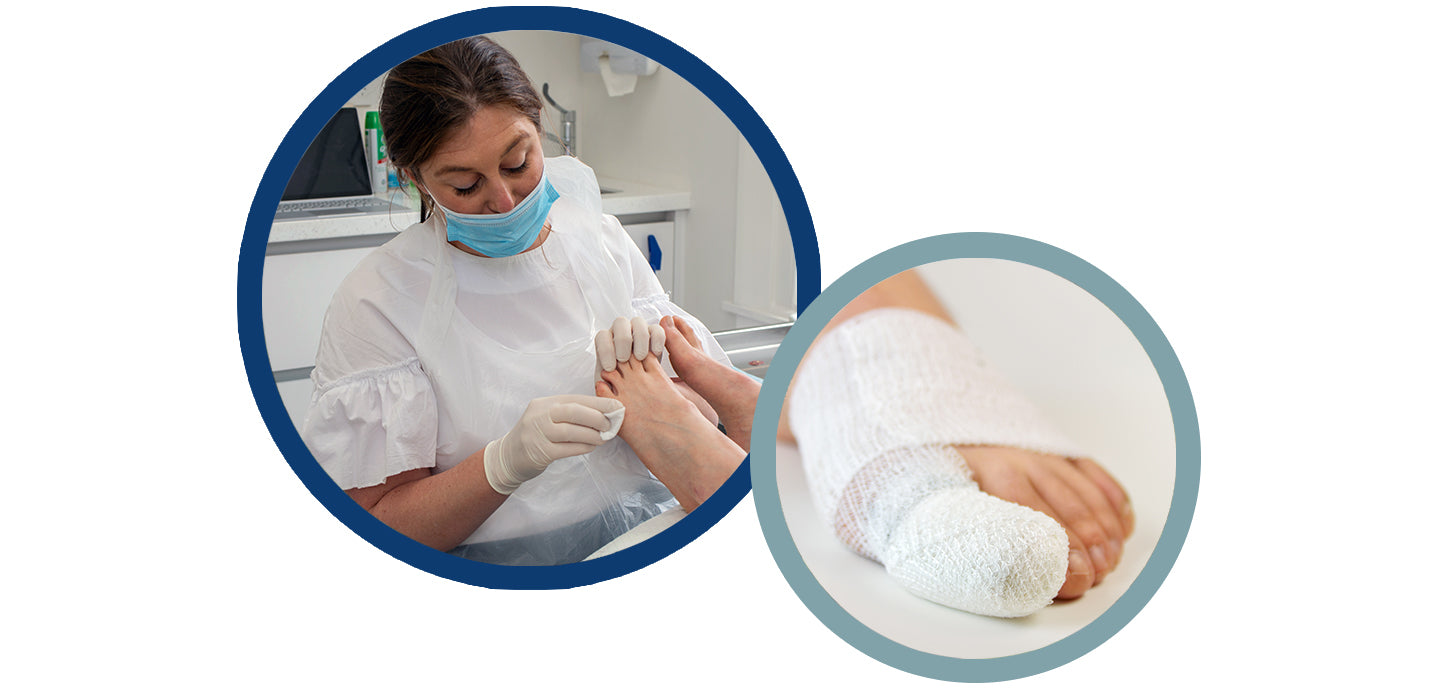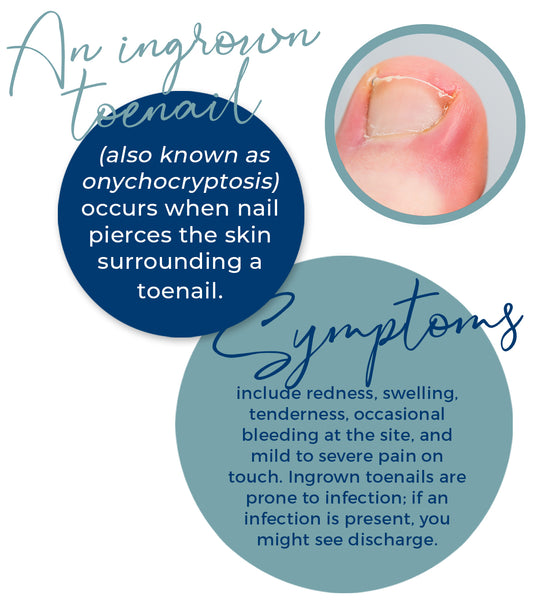Surgical Ingrown Toenail Treatments & Surgery Costs

Welcome to the Ingrown Toenail Clinic – the only clinic in Christchurch dedicated to the diagnosis, treatment, management and prevention of ingrown toenails. We are a team of passionate podiatrists who love helping people get back on their feet as soon as possible.
What is an ingrown toenail and how do you know if you have one?

Our podiatrists offer the most effective treatments for ingrown toenails, both surgical and non-surgical. On this page, we discuss ingrown toenail surgery, but you can also visit our non-surgical treatments page.
Surgical Treatment
We recommend surgery when an ingrown toenail becomes very painful, infected and/or when other non-surgical treatments have been unsuccessful. Additionally, surgery is recommended if you’ve had an ingrown toenail multiple times at the same site—if an ingrown nail occurs more than twice, it is probably going to reoccur without surgical intervention.
The most common form of ingrown toenail surgery we perform is called a Partial Nail Avulsion (PNA). This might sound scary, but it’s actually painless and our podiatrists are experts in performing this surgery—we’ve done this many times before and know how to keep you and your nail safe and comfortable.
Partial Nail Ablation involves removing the offending part of the nail to relieve pressure. We’ll then apply a chemical called phenol to prevent regrowth and minimise the chance of recurrence.
A breakdown of the surgical procedure:
- A local anaesthetic is applied to numb the toe completely. Your podiatrist will confirm with you that your toe is completely numb before proceeding further.
- Your podiatrist will apply a tourniquet (a tight rubber band) around your toe. This reduces blood flow for the short procedure.
- The problematic ingrown section of the nail is removed and phenol is applied to prevent regrowth.
- The site is flushed with saline and a sterile dressing is applied to your toe.
This surgery can be done in our podiatry clinic (there’s no need to go to hospital) and you’ll be able to walk immediately afterwards. You won’t need any stiches. We strongly recommend bringing open-toed shoes so there’s no pressure on the site following surgery.
Please ask someone to drive you home if needed as you won’t be able to drive for 12 hours following the procedure. Once you arrive home, elevate your foot for the remainder of the day, keeping your foot higher than your heart if possible. Avoid excessive walking for the first week and only return to regular exercise and sport after talking with your podiatrist.
We ask that all patients return for two re-dressings and a final check three months after the procedure.
We also perform Total Nail Avulsions (TNA) on the rare occasion the whole toenail needs to be removed.
Ingrown Toenail FAQs:
What causes an ingrown toenail?
There’s no single cause for ingrown toenails, though there are some common causes. The most common cause is improper nail cutting techniques. Make sure to cut your toenails in a straight, clean line following the curve of your nail and file down any sharp edges. Other common causes include pulling or picking at your nails, tight footwear, trauma to the toe, and genetic factors.
Can I treat my ingrown toenail at home?
Sometimes, minor ingrown toenails can be resolved by soaking the toe in warm water and elevating it. This will reduce the swelling and pain. However, if pain and inflammation persist, get your nail examined by a podiatrist as soon as possible.
When should I see a podiatrist?
If you’re at all concerned, see a podiatrist. If your pain worsens, if the nail becomes infected, or you have a fever, seek a podiatrist as soon as possible. Also, those with diabetes should see a podiatrist as soon as possible even if the ingrown nail doesn’t seem bad as diabetes effects the circulation and health of the feet.
Do I need ingrown toenail surgery?
This depends on how ingrown the toenail is, whether this is your first ingrown toenail at the site, and genetic factors. Your podiatrist will determine which course of action will be most effective at treating your ingrown toenail and preventing reoccurrence.
How long does the surgery take?
We set aside 60 minutes for this surgery, which includes preparation, dressing the toe post-operation, and any discussions with your podiatrist.
What does ingrown toenail surgery cost?
Compared to other surgical procedures, ingrown toenail surgery is a cost-effective and pain-free solution that efficiently addresses the issue, ensuring relief and optimal foot health.
BOOK AN APPOINTMENT
The Ingrown Toenail is located within Merivale Podiatry, which can be found in the heart of Merivale, Christchurch. We’d love to help get rid of your ingrown toenail once and for all – book an appointment with us today.
